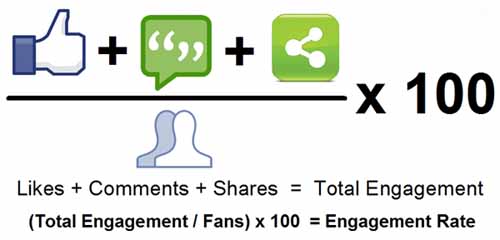




Competencies comprise the knowledge, skills, values and attributes demonstrated through behavior that results in competent and superior performance. Competency describes what superior performers actually do on a job that produces superior results.
CHARACTERISTICS OF COMPETENCY
Motives: things a person constantly thinks about or wants which result in action
Traits: physical characteristics and consistent responses to situation or information
Self-concept: a person’s attitudes, values, or self-image
Knowledge: information that a person has in specific content areas
Skills: the ability to perform a certain mental or physical task
CLASSIFICATION OF COMPETENCY
- Threshold competencies
- Differentiating competencies
- Behavioral competencies
The characteristics required by a jobholder to perform a job effectively are called threshold competencies. E.g. for the position of a typist it is necessary to have primary knowledge about typing, which is a threshold competency.
- Differentiating competencies
The characteristics, which differentiate superior performers from average performers, come under this category; such characteristics are not found in average performers. E.g. knowledge of formatting is a competency that makes a typist to superior to others in performance, which is a differentiating competency.
These refer to competencies that are required by people in terms of behavior. E.g. team working-the competency required by an employee working in a typing group in an office where they may be required to cover up for others as the work grows.
Classification of Competencies
Competencies can broadly be classified into two categories –
| Competencies = Basic Competencies + Professional Competencies |
|
- Professional competencies
Types of Basic Competencies
- Intellectual Competencies: Those which determine the intellectual ability of a person.
- Motivational Competencies: Those which determine the level of motivation in an individual.
- Emotional Competencies: Those which determine an individual’s emotional quotient.
- Social Competencies: Those that determine the level of social ability in a person. It has been proved by various scholars that all individuals have competencies. Only the combination and degree of these competencies differ from individual to individual. Hence, organizations have to identify the critical basic competencies required for individual employees to deliver their best in their organization. The importance of mapping the competencies proves critical for organizational success.
Types of professional competencies
Optimizing career prospects: this competence involves the ability to envision future opportunities, and having determined broadly defined goals, to create and make own chances. It represents a form of well – considered opportunism. To undertake optimizing process successfully, a particular set of skills and behavior need to be brought into play.
Career Planning – Plying to your Strength: In career planning of employees, four steps are involved. They are
- Review how for their work are using their skills and satisfying their needs and interests.
- Identify the own development needs and what is required for effective performance.
- Obtain data from the experience of mentors, partners and other work colleagues
- Anticipate future changes and prepare for job opportunities that might arise.
- The development of career planning competence should go some way to help individuals to take ownership and management of their own career development
Engaging In personal Development: employers are no longer guarantee life long continuity of employment or upward career progression. Therefore, more attention is to be paid to personal development rather than career development alone. The forms of personal development vary, but the range I s increasing. For this purpose firstly, employee need to have a sufficient self awareness to review and identify their development needs. Secondly they need to be effective learners with a positive attitude towards the learning process. Learning seldom happens in a vacuum; it takes place in a social context and those in the workplace may need to gather around them a supportive network in order to understand personal development activity of a challenging nature.
Balancing work and Non-work: the concern to balance work and non work is clearly a function of career stage. Being able to define one’s own work priorities and maintain one’s motivation in the absence of externally defined checks on performance become increasingly important. The issue of balancing work and non-work is problematic because of the competing demands of work and personal life. The competence to balance work and nonworking is required by all those in the workplace because the relationship between the two is never static, but ever changing.
COMPETENCY MAPPING
Competency Mapping is a process of identifying the key competencies for an organization and/or a job and incorporating those competencies throughout the various processes (i.e. job evaluation, training, recruitment) of the organization.
Models for competency mapping
A competency mapping is a description of skills, traits, experiences and knowledge required for a person to be effective in a job. There are three models in mapping the competencies described as follows:
THE ONE-SIZE-FITS-ALL COMPETENCY MODEL
This model uses the data obtained from existing job descriptions and job analysis. The data pertaining to a class of jobs, for example all sale representatives will be consolidated and key features will be identified to convert them into competency traits. The general features like organizational mission, objectives and culture related competence would be added to build a competency model for a particular type of employee.
THE MULTI JOB COMPETENCY MODEL
There are three steps in this. In the first step, Competencies required for organizational function will be identified. Secondly these competencies will be classified into technical, social, marketing, management, finance and general. In the third step, Combination of competencies will be grouped to draw a particular role like finance manager, technical manager, quality manager like wise.
THE SINGLE JOB COMPETENCY MODEL
This is the traditional, time tested and commonly used method. A position that is most important and being performed well will be identified from a class of positions (Jobs). Data will be obtained observing its incumbent while performing the job, discussing with him/ her and other related departments, past records, decisions taken by that person, formal job description etc. the data so obtained will be used to build competency model for that particular position.
MODEL OF COMMON MANAGEMENT COMPETENCIES
The availability of right quality and quantity of management competence is the key factor in business success of organisations. This realization struck many organisations during the current decade and effort made to tone up their managers. A common issue across all the organisations is, managers should be equipped with what kind of competencies. It is also a fact that managers must possess the competencies specific to their organizational need and environment. According to Andrew May there is a competence set that is applicable to all organizations and he illustrated them in his paper titled “Developing Management Competencies for fast changing organisations”.
These are:
- Operations Management
- Managing Time effectively such as control of time scheduling and project control
- Planning and decision making consisting controlling planning, option evaluation and evaluation of plan performance
- Managing change consisting Identifying Improvement opportunities, Formulating change objective and Monitoring and evaluating change
- Quality management consisting quality measurement, conditions monitoring and diagnostics and systems control
- People Management
- Team leadership indicating leadership style, structured team, delegation, counseling and meeting participation
- Performance management consists of assessing competencies, job design and review, target setting and review , and motivation of staff
- Influencing others like planning process management and negotiating.
- Legal issues of employment that includes health and safety, recruitment and employment conditions, and industrial relations
- Financial Management
- Financial controls that includes Cost Monitoring, Financial Statement Analysis, Results preparation, and financial system awareness.
- Financial planning Including Investment appraisal, System development, and managing outsourcing
- Information Management
- Communication that includes Presenting Information, Selling ideas and behavior interpretation.
- Marketing
- Marketing consisting of marketing strategies
- Behavior competencies
- This includes Entrepreneurial, Creative thinking, Management synergy, Logical thinking, and Analytical ability
EQUITY AND COMPETENCY BASED PAY
Compensation
Compensation of an employee consists of mainly three components, the base wage or salary, incentives and benefits. Base wage or salary forms the basis for calculating or determining the total compensation of an employee.
There are three different concepts of wages: the minimum wage, the fair wage and the living wage. The minimum wage is the least of them all and the living wage, the highest. Minimum wage is the base wage that an employee has to be paid to fulfill his basic needs and provide basic amenities for his family. The fair wage takes into consideration the paying capacity of the employer. The living wage, which is the highest of the three, is aimed at providing a comfortable living for the employee and his family. It includes providing health, educational and social facilities. Traditional wage plans include the piece-wage plan, based on the units produced by the employee and the time-wage plan, based on the total working time of the employee. Modern wage plans include skill-based wage plan, competency based wage plan.
COMPETENCY BASED PAY
The design of most compensation programs reward employees for carrying out their tasks, duties and responsibilities. The job requirements determine which employees have higher base rates. Employees receive more for doing jobs that require a greater variety of tasks, more knowledge and skills, greater physical effort, or more demanding working conditions. However, some organizations are emphasizing competencies rather than tasks. A number of organizations are paying employees for the competencies they demonstrate rather than just of the specific task performed. Paying for competencies rewards employees to exhibit more versatility and continue to develop their competencies. In knowledge based pay (KBP) or skill based pay (SBP) systems, employees start at a base level of pay and receive increases as they learn to do other jobs or gain other skills and therefore become more valuable to the employer. For example, a power loom operates single color, two color, four color, six color and multicolor weaves. The more colors, the more skill is required of the power loom operator. Under a KBP or SBP system, the operator increases his or her pay as they learn to operate the more complex processes like four colors, six colors and multi color weaves, even though sometimes they may be running only two color weaves.
The success of the competency based pay plans depends on the managerial commitment to a philosophy different from the traditional one in organizations. This approach places far more emphasis on training employees and supervisors. Also, workflow must be adapted to allow workers to move from job to job as needed. When an organization moves to a competency-based system, considerable time must be spent identifying the required competencies for various jobs. Then each block of competencies must be priced using market data. Progression of employees must be possible, and they must be paid appropriately for all their competencies. Any limitations on the number of people who can acquire more competencies should be identified. Training in the appropriate competencies is particularly critical. Also, a competency based system needs to acknowledge or certify employees as they acquire certain competencies, and then to verify the maintenance of those competencies. Hence this type of pay system requires significant investment of management time and commitment.
Outcomes of Competency Based Pay System
The benefits of the competency based pay system can be analyzed under two categories
(i) Organization related outcomes and
(ii) Employee related outcomes, which are discussed below.
Organization Related Outcomes
- Greater work flexibility
- Increased work effectiveness
- Fewer bottlenecks of work flow
- Increased worker output per hour
- More career enhancement opportunities
- Increased internal supply of work force
- Undisturbed work flow
- Enhanced organizational learning
Employee Related Outcomes
- Enhanced employee understanding of the organizational “big picture”
- Greater employee self management capabilities
- Greater employee commitment
- Greater employee self enhancement
- Improved employee satisfaction
- Increased employee motivation
- Increased employee participation in training activities
- Increased individual learning
- Better and equipped work force
- Employee can withstand change in a better way
- With increased skill sets, employee feels confident.
Pay Openness
Another equity issue concerns the degree of openness or secrecy that organizations allow regarding their pay systems. Pay information kept secret in closed-systems includes how much others make, what raises others have received and even what pay grades and ranges exist in the organization.
A growing number of organizations are opening up their pay systems to some degree by informing employees of compensation policies, providing a general description of the compensation system, and indicating where an individual’s pay is within a pay grade. Such information allows employees to make more accurate equity comparisons. The crucial element in an open pay system is that managers be able to explain satisfactorily the pay differences that exist.
External Equity
If an employer does not provide compensation that employees view as equitable in relation to the compensation provided to employees performing similar jobs in other organizations, that organization is likely to experience higher turnover. Other drawbacks include greater difficulty in recruiting qualified and high-demand individuals. Also, by not being competitive the employers are more likely to attract and retain individuals with less knowledge, skills, and abilities, resulting in lower overall organizational performance. Organizations track external equity by using pay surveys.
Please SPREAD the word further.Don’t thank me but help three other persons read the above article.Don’t forget to send me your comments.This will get me more motivated to increase my blogging speed.
www.blogzynergy.com












